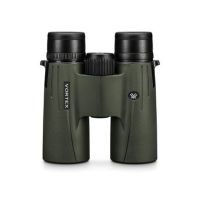If there is a month to consider hunting staging areas, it’s October. That is, at least, if you’re the kind of hunter who spends time on public land, or just generally around pressured deer. In either case, the field-edge pattern has probably died a quick death, and the dreaded reality of educated bucks has come to be.
Although we conflate the two frequently, educated does not mean nocturnal.
Educated just means not reckless. Not reckless means sticking to the cover and using it to survive. Deer do this well. Big bucks do this really well, but their strategy isn’t flawless. In fact, their confidence in this strategy is what gives you the chance to kill them (sometimes).
To do this, you’ve got to understand what really makes up a buck’s staging area and why he is there. The first key to this is the aforementioned cover. Without good cover, you’re not dealing with a staging area. This cover must also create a rough line between bedding and food. Deer will go out of their way to not die, but they are largely point-A-to-point-B critters, because nature doesn’t waste a lot of calories.
Knowing this, one strategy for finding a staging area is to look at destination food sources and then factor in likely bedding areas. Somewhere between the two is where bucks will stage in the mornings and evenings. That might be 40 yards off the groceries in ag-heavy areas, or half a mile out West where there's a single alfalfa field in five sections, or half a mile in the big woods where there's a single young clear cut in 10,000 acres.
It doesn’t matter, because if you don’t have a rough idea of where the deer start and end their morning or evening travel, you’ll have a rough time finding a staging area.
Let’s say you do get that squared away, and you know bucks will spend some daylight time milling around somewhere between here and there. The next step is to consider the terrain.
This task is easier in bluffy or hilly country than on flatter ground. Elevation offers advantages, and often you’ll find staging areas where ridges terminate or on benchy hillsides. These are usually within visual distance of the destination food, which probably means they are within hearing distance, as well.
A buck that doesn’t want to catch an arrow in his lungs is a buck that will use his senses to avoid such inconveniences. If he can get up from his bed and walk to the end of the ridge that eventually leads down to the soybeans, he can make a few rubs, eat some acorns, and watch, sniff, and listen. The does and young bucks that hit the field as the sun sets will tell him a lot if they don’t snort and run away. The wind blowing off the field will tell him even more, and of course, seeing a hunter climbing down from a tree at dark tells him a hell of a lot more.
A good staging area allows him to use his senses to keep track of the danger in the direction he eventually plans to go. This gives him confidence because it works against all predators, not just humans.
In other words, a good staging area is like the deer’s version of an observation stand. While we might slip into a woodlot, saddle up, and mostly just watch the evening deer traffic to get a better idea of where to hunt tomorrow, a buck will (sort of) do the same thing. He’s positioning himself to detect you, because he knows where you are likely to be, and where he can be to not get detected by you.
Whether he stages in a spine of alders and tamaracks on a swamp edge in flatter country, or your typical ridgetop in the hardwoods, he’s observing you with his eyes, ears, and nose. He’s doing all of this in response to hunting pressure in expected locations, which means you now have to bring the pressure to him in an unexpected location.
This can be risky. The best setup for a staging area hunt is one where you’re able to slip out through the cover after the deer have filtered past. But this is not easy, and sometimes impossible.
If you can get out with low risk of detection, then by all means, get in there and hunt. If you can’t, you’ll have a negative impact on the deer movement. This doesn’t mean you shouldn’t hunt a promising staging area, but you should plan around perfect conditions. You can get away with a bit more intrusion during heavy wind or some rain, or you can time your hunt for the coldest, most ideal day of the week, and hope to strike the first time you get in and sit.
This conundrum, where you know you’ll probably spook some deer, is one that keeps a lot of hunters at home until later in the month. Instead of waiting, give it a shot. Move in on a good staging area, and keep your binos in your hands until you swap them out for your bow. While the terrain, rubs, and everything else might point to you being in the perfect spot, staging areas often consist of a few acres or more.
You can learn a lot by closely watching a buck ghost through the brush 100 yards away. You want to see where he walks, where he rubs and scrapes, and how he uses the staging area to his advantage. You also want to see who is with him, because the best staging areas are often shared by several deer, likely because they are all operating off the same survival instincts.
The key with all of this is to recognize the factors that make a good staging area, and then actually hunting them. A lot of the loudest voices in the hunting industry will tell you to wait until later in the month to put in serious time, but they’ve got the luxury of waiting. Their spots won’t get hunted until they hunt them. Most of us don’t have that option and would rather figure out a way to beat the bucks now.
This is possible, even on public land, but you must figure out where the deer will be moving in daylight to have a good chance. Odds are, that place will be a staging area.
Feature image via Matt Hansen.







